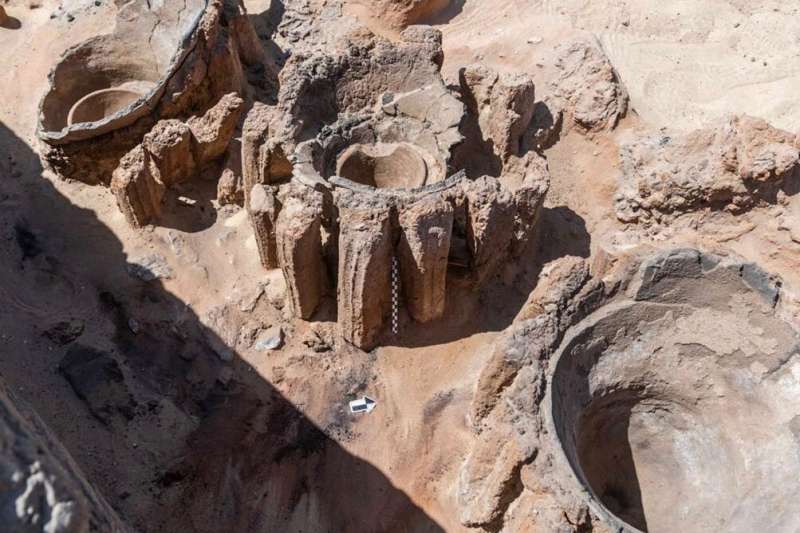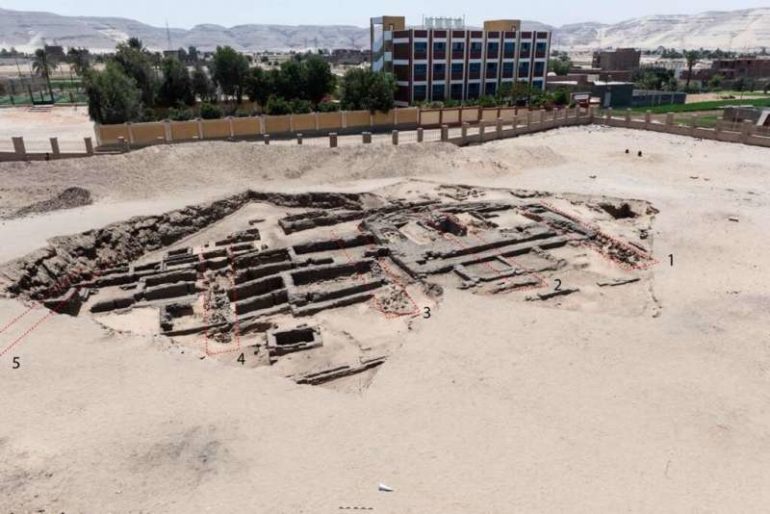A high-production brewery believed to be more than 5,000 years old has been uncovered by a team of archaeologists at a funerary site in southern Egypt, the tourism ministry said Saturday.
The site containing several “units” consisting of about 40 earthenware pots arranged in two rows was uncovered at North Abydos, Sohag, by a joint Egyptian-American team, the ministry said in a statement on its Facebook page.
The brewery likely dates back to the era of King Narmer, it quoted the secretary general of Egypt’s Supreme Council of Antiquities, Mostafa Waziry, as saying, adding it believed the find to “be the oldest high-production brewery in the world.”
Narmer, who ruled more than 5,000 years ago, founded the First Dynasty and unified Upper and Lower Egypt.
British archaeologists first discovered the existence of the brewery at the beginning of the 20th century but its location was never precisely determined, the statement said.
The joint Egyptian-American team “was able to re-locate and uncover its contents”, it said.
According to Waziry, the brewery consisted of eight large areas which were used as “units for beer production”.
Each sector contained about 40 earthenware pots arranged in two rows.
A mixture of grains and water used for beer production was heated in the vats, with each basin “held in place by levers made of clay placed vertically in the form of rings”.
Brew for ‘royal rituals’
Archaeologist Matthew Adams of New York University, who heads the joint mission with Deborah Vischak of Princeton University, said studies have shown that beer was produced at a large scale, with about 22,400 litres made at a time.
The brewery “may have been built in this place specifically to supply the royal rituals that were taking place inside the funeral facilities of the kings of Egypt”, the statement quoted him as saying.
“Evidence for the use of beer in sacrificial rites was found during excavations in these facilities,” the statement said.
Evidence of beer-making in ancient Egypt is not new, and past discoveries have shed light on such production.
Fragments of pottery used by Egyptians to make beer and dating back 5,000 years were discovered on a building site in Tel Aviv, the Israeli Antiquities Authority announced in 2015.
Abydos, where the latest discovery was unearthed, has yielded many treasures over the years and is famed for its temples, such as that of Seti I.

In 2000, a team of US archaeologists brought to light in Abydos the earliest known example of an ancient Egyptian solar barge, dating back to the first Pharaonic dynasty around 5,000 years ago.
Egypt has announced several major new discoveries which it hopes will spur tourism, a sector which has suffered multiple blows—from a 2011 uprising to the coronavirus pandemic.
A mission working near Alexandria recently discovered several mummies from around 2,000 years ago bearing golden-tongued amulets—thought to have been placed in the mouths of the dead to ensure they could speak in the afterlife.
Authorities had expected 15 million tourists to visit Egypt in 2020, compared to 13 million the previous year, but the virus has kept holidaymakers away.
Egypt unveils ancient coffins, statues found in Saqqara
2021 AFP
Citation:
Egypt unearths ‘world’s oldest’ mass-production brewery (2021, February 14)
retrieved 14 February 2021
from https://phys.org/news/2021-02-egypt-archaeologists-unearth-ancient-beer.html
This document is subject to copyright. Apart from any fair dealing for the purpose of private study or research, no
part may be reproduced without the written permission. The content is provided for information purposes only.



